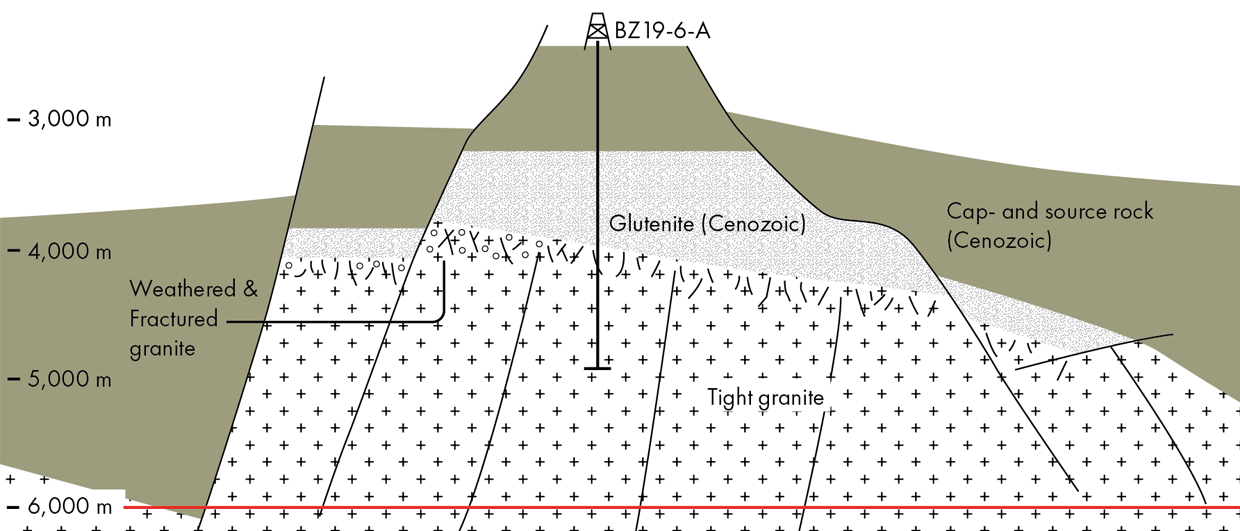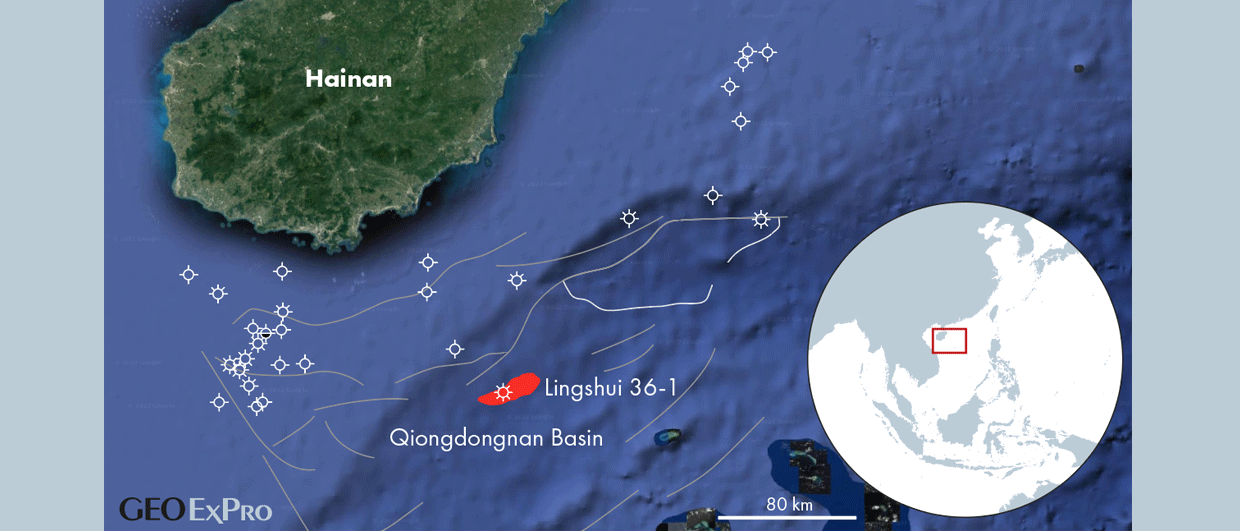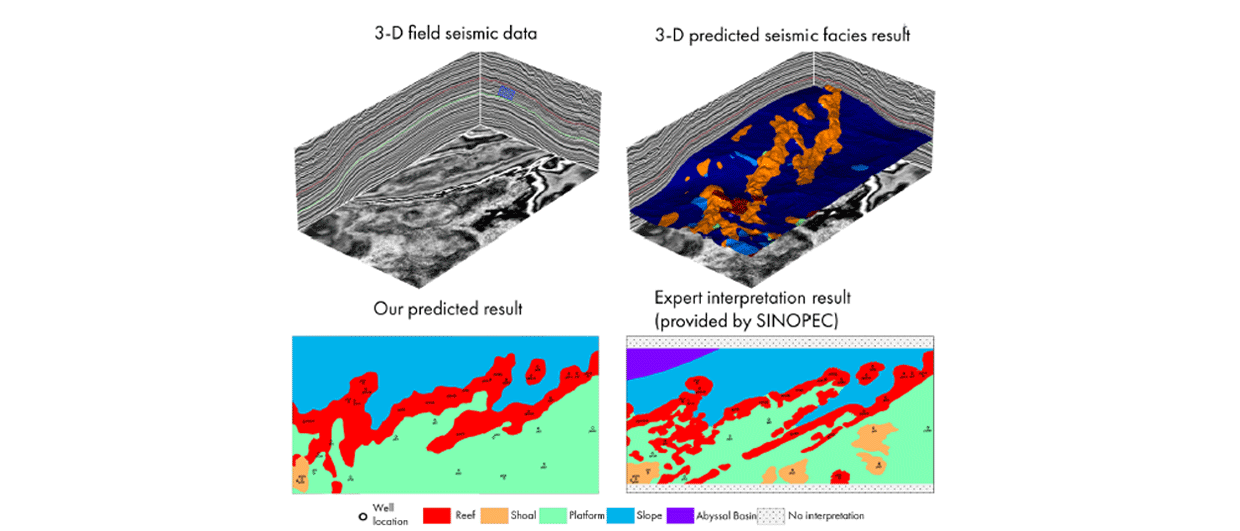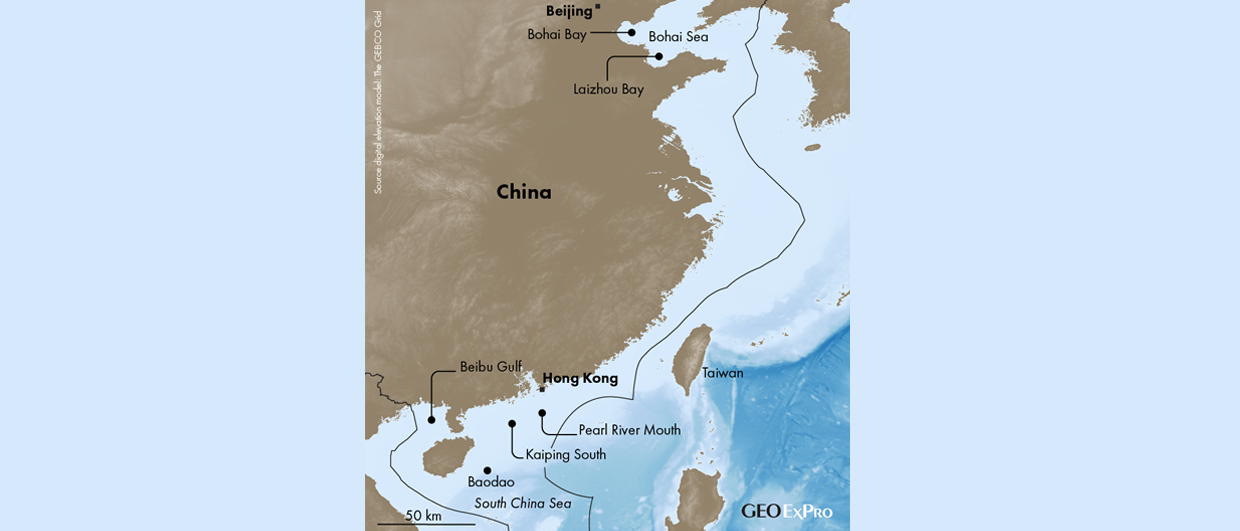Today, a press release issued by CNOOC discusses the results of the first ultra-deep well (Bozhong 19-6 Condensate Gas Field D1 Well) completed in the Bohai Bay area, offshore China. This is interesting from multiple points of view.
First, it gives away what China is focusing on in the light of their recent announcement to set up a special company dedicated at drilling deeper wells. The press release issued today fits into this, and suggests that China is not only looking to find deep gas in onshore basins like the Tarim, but is also looking at finding hydrocarbons beneath existing assets.
Secondly, the reported terminal depth of the well at more than 6,000 m is worth noting. We added this depth as a red line in the cross-section above. The section shows the Bozhong 19-6 condensate field and was adapted from a publication by Mingcai Hou and co-authors. Of course, the exact location of the newly drilled well is unknown, but if this section is anything to go by, it suggests that the company drilled either into fresh unweathered basement or very deeply buried clastics on its sides. This poses the question; how can flow rates of 6,300 barrels of oil equivalent per day be achieved in such a subsurface setting? Surely, the press release seems to suggest that it’s coming from the newly drilled well…
It is worth following what the Chinese are doing when it comes to drilling deeper. They seem to be exploring subsurface domains that are not being considered by many others.
See also: CNOOC makes largest offshore hydrocarbon discovery in special rock formation. What is that about?





